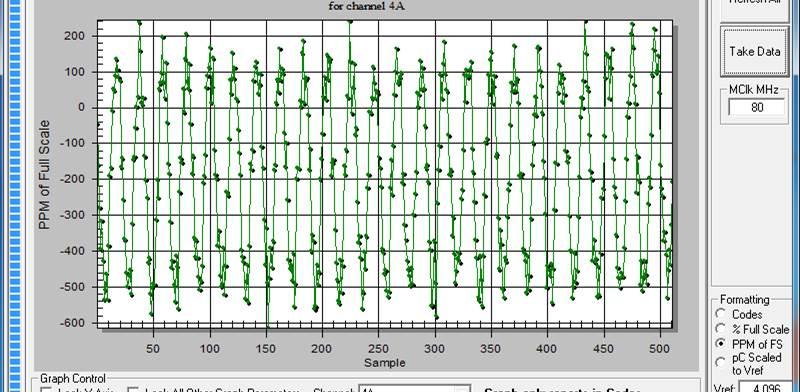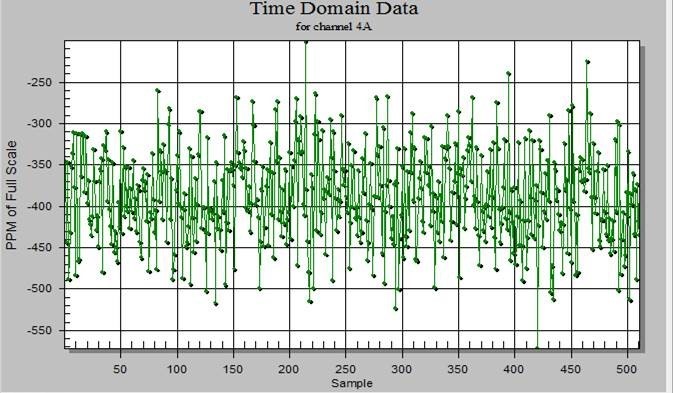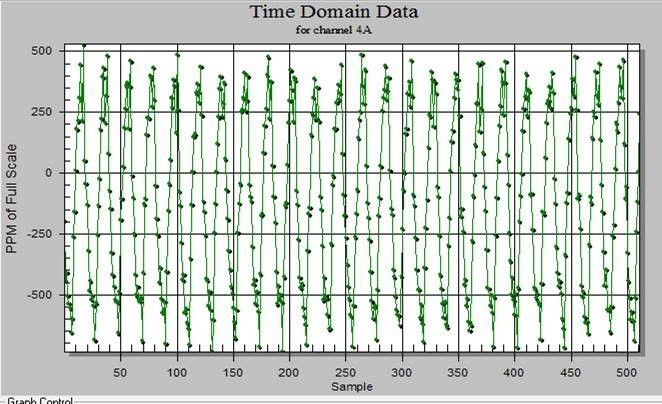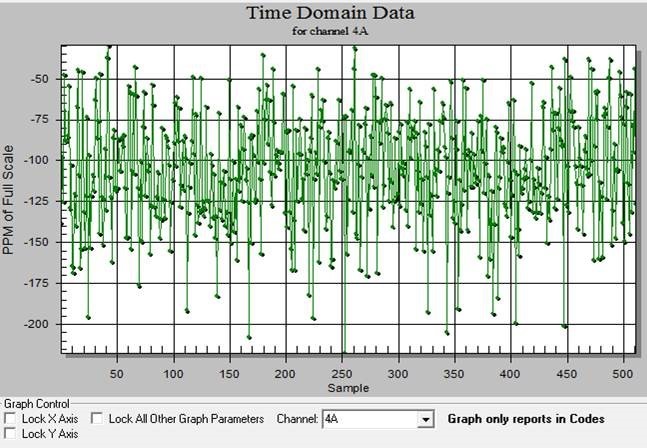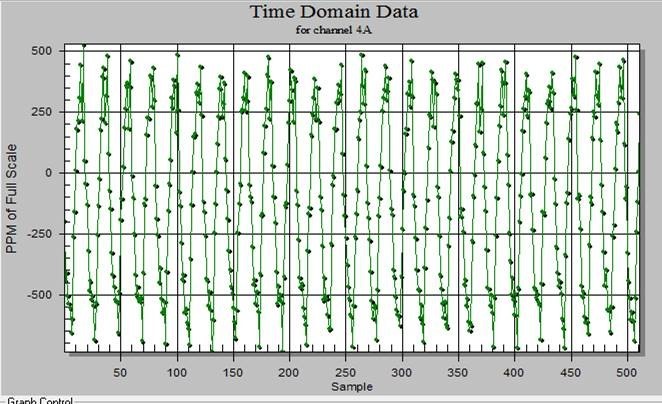Other Parts Discussed in Thread: DDC114,
Dear Specialists,
My customer is interested in DDC114 and confirming DDC11xEVM-PDK.
He'd like to confirm the Graph at no signal.( The input is connected to GND)
Could you please see the graph below.
He is thinking the noise is large.
Is there any problem?
Are there any idea of noise reduction?
I appreciate your great help in advance.
Best regards,
Shinichi


